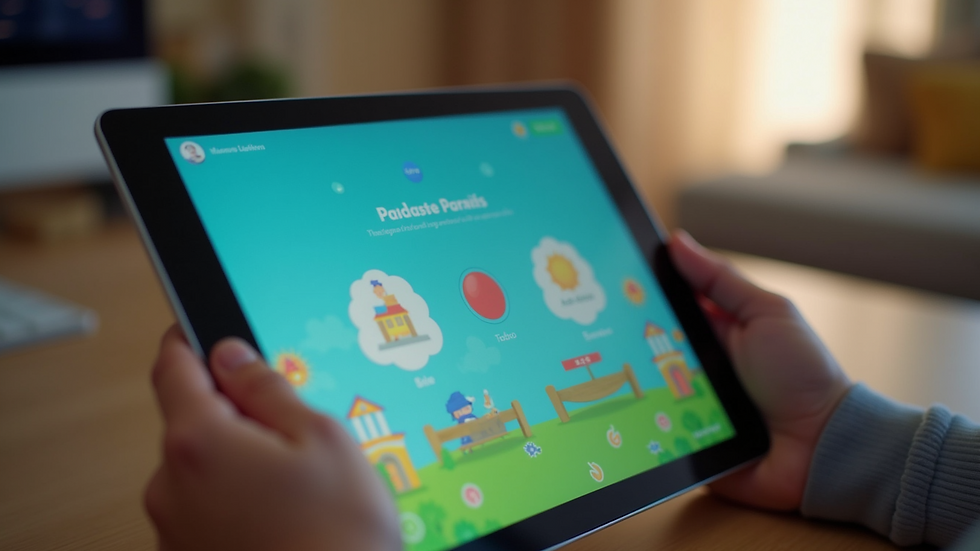Enhancing Education Through Game-Based Learning
- Pedagogical Innovation
- Aug 5
- 4 min read
Education is evolving rapidly, and one of the most exciting developments is the integration of games into learning environments. This approach transforms traditional teaching methods by making learning more interactive, engaging, and effective. By incorporating game elements, educators can motivate students, improve retention, and foster critical thinking skills. This article explores how game-enhanced education is reshaping classrooms and offers practical insights for educators and institutions looking to adopt this innovative approach.
The Rise of Game-Enhanced Education in Modern Classrooms
Game-enhanced education is gaining momentum worldwide as schools and universities seek new ways to engage students. Unlike conventional lectures, game-enhanced education uses interactive challenges, storytelling, and rewards to create a dynamic learning experience. This method appeals to diverse learning styles and encourages active participation.
For example, a history teacher might use a role-playing game where students assume the roles of historical figures, making decisions that affect the outcome of events. This immersive experience helps students understand complex concepts and retain information longer. Similarly, science classes can benefit from simulation games that allow students to experiment with virtual labs safely and repeatedly.
The benefits of game-enhanced education include:
Increased student motivation and enthusiasm
Enhanced problem-solving and critical thinking skills
Improved collaboration and communication among peers
Immediate feedback and personalized learning paths

How Game-Enhanced Education Transforms Learning Outcomes
The impact of game-enhanced education on learning outcomes is significant. By integrating game mechanics such as points, levels, and badges, educators create a sense of achievement that drives students to progress. This approach also supports differentiated instruction, allowing learners to advance at their own pace.
One practical example is the use of educational platforms that incorporate game elements to teach mathematics. Students solve problems to earn points and unlock new challenges, making math practice feel like a rewarding adventure rather than a chore. This method has been shown to increase engagement and improve test scores.
Moreover, game-enhanced education fosters soft skills development. Team-based games encourage communication, leadership, and conflict resolution. These skills are essential for success beyond the classroom and prepare students for real-world challenges.
To implement game-enhanced education effectively, educators should:
Align game activities with curriculum goals
Choose games that are age-appropriate and relevant
Provide clear instructions and objectives
Encourage reflection and discussion after gameplay
Use technology to track progress and adapt challenges

What is the difference between gamification and game-based learning?
Understanding the distinction between gamification and game-based learning is crucial for educators aiming to enhance their teaching strategies. While both involve games, they serve different purposes and are applied differently in educational contexts.
Gamification refers to the use of game-like elements in non-game settings. This might include adding points, leaderboards, or badges to traditional lessons to increase motivation. For example, a teacher might award points for homework completion or class participation, turning routine tasks into a competitive and fun experience.
On the other hand, game-based learning involves using actual games designed with educational objectives in mind. These games immerse students in scenarios where learning happens through gameplay. For instance, a language learning game might require players to solve puzzles using vocabulary and grammar skills.
The key differences are:
Purpose: Gamification enhances existing activities, while game-based learning uses games as the primary learning tool.
Engagement: Gamification adds motivation, but game-based learning provides immersive experiences.
Design: Gamification elements are integrated into lessons; game-based learning relies on specially designed educational games.
Both approaches can be combined for maximum effect, but understanding their unique roles helps educators choose the best method for their goals.

Practical Tips for Integrating Game-Enhanced Education
Successfully incorporating game-enhanced education requires thoughtful planning and execution. Here are some actionable recommendations to help educators get started:
Start Small: Begin with simple game elements like quizzes or point systems before moving to complex games.
Use Available Resources: Leverage free or low-cost educational games and platforms to minimize expenses.
Train Educators: Provide professional development to help teachers understand game design and its educational benefits.
Encourage Collaboration: Design games that promote teamwork and peer learning.
Gather Feedback: Regularly ask students for input to improve game activities and ensure they meet learning needs.
Balance Fun and Learning: Ensure that games are engaging but also aligned with educational objectives.
By following these tips, schools can create a supportive environment where game-enhanced education thrives and students benefit from a more interactive and enjoyable learning experience.
The Future of Education with Game-Enhanced Learning
The future of education looks promising with the continued growth of game-enhanced learning. Advances in technology such as virtual reality (VR), augmented reality (AR), and artificial intelligence (AI) are opening new possibilities for immersive and personalized learning experiences.
Imagine students exploring ancient civilizations through VR or solving complex scientific problems with AI-driven adaptive games. These innovations will make learning more accessible and tailored to individual needs.
Educators and institutions should stay informed about emerging trends and be open to experimenting with new tools. Collaboration between game developers, educators, and researchers will be essential to create effective educational games that meet diverse learning goals.
Incorporating game-based learning into curricula is not just a trend but a transformative approach that can revolutionize how knowledge is acquired and applied.

By embracing game-enhanced education, we can create engaging, effective, and enjoyable learning environments that prepare students for the challenges of tomorrow. The journey towards this future starts with understanding the potential of games in education and taking practical steps to integrate them thoughtfully.


